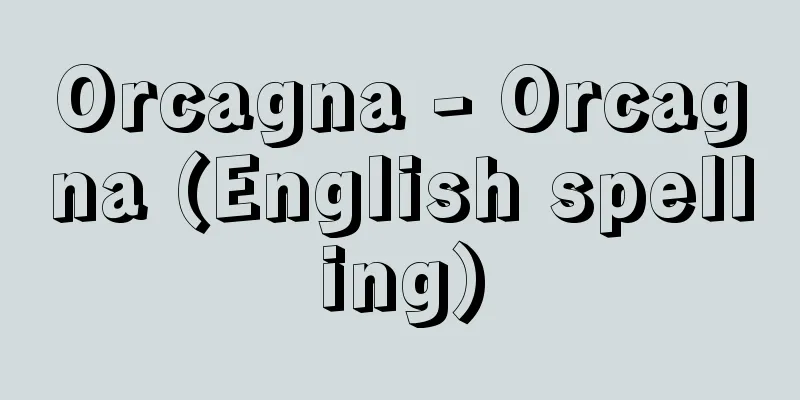Okazaki Castle

A castle located in Okazaki City, Aichi Prefecture. It is one of the "100 Great Castles in Japan" selected by the Japan Castle Foundation. Originally a flatland castle ( Hirayamajiro ) with a series of enclosures, it was renovated into a flatland castle in the early Edo period. It was the residence of the Tokugawa clan (Matsudaira clan) from the Sengoku period to the Azuchi-Momoyama period, and Tokugawa Ieyasu was born here. In the Edo period, it was the castle where the Okazaki Domain's administrative office was located. Built on a hill called Ryuzuyama near the confluence of the Sugo River and the Yahagi River, it was originally the site of Ryutozan Castle, built by Saigo Tsuneyori, who was the deputy governor of the Niki clan, the governor of Mikawa Province in the early Muromachi period, but Matsudaira Kiyoyasu (grandfather of Tokugawa Ieyasu), who seized this castle, renovated and expanded it to create Okazaki Castle. When his son Matsudaira Hirotada (Ieyasu's father) was killed in a rebellion by his retainers in 1549 (Tenbun 18), the Imagawa clan took over the castle and appointed a castle lord for the Imagawa clan. In 1560 (Eiroku 3), after Imagawa Yoshimoto was defeated and killed in the Battle of Okehazama, Matsudaira Motoyasu (later Ieyasu), who had participated in the battle as a subordinate of the Imagawa clan, recaptured Okazaki Castle and made it his castle, becoming independent from the Imagawa clan. Later, in 1570 (Genki 1), Ieyasu moved his base to Hamamatsu Castle (Hamamatsu City, Shizuoka Prefecture) and had his eldest son Matsudaira Nobuyasu enter Okazaki Castle, but after Nobuyasu committed suicide due to suspicion of rebellion, senior vassals Ishikawa Kazumasa and Honda Shigetsugu served as castle lords. In 1590 (Tensho 18), when Ieyasu was transferred to the Kanto region, Toyotomi's Tanaka Yoshimasa took over Okazaki Castle, expanded it, improved its stone walls and castle walls, transformed it into a modern castle, and developed the castle town. In the Edo period, the shogunate placed great importance on Okazaki Castle as the castle where Ieyasu was born, and successive fudai daimyo served as the castle's lord. Three generations of Tokugawa fudai Honda Yasushige, Yasunori, and Tadatoshi, who served as the castle's lords (feudal lords) from 1600 (Keicho 5) to 1645 (Shoho 2), undertook major renovations of the castle, transforming it into a flat castle, and in 1617 (Genna 3), a three-tiered, three-storey castle tower was built in the main citadel. When Okazaki Prefecture was established in 1871 (Meiji 4) after the Meiji Restoration, the prefectural office was located in the castle, and it continued to be located there even after it was later merged with Nukata Prefecture. However, the prefectural office was moved to Nagoya City in the subsequent merger, and in 1873 (Meiji 6), the castle was abandoned due to the castle abolition order, and the castle tower and other buildings were removed and sold off. As a result, no buildings from that time remain, and many of the castle's boundaries have been lost, leaving only the remains of the main castle and several surrounding enclosures, stone walls, and moats. The current castle tower was rebuilt in 1959 (Showa 34). The castle ruins are now maintained as Okazaki Park. The park is known as a famous cherry blossom spot and has been selected as one of the 100 best cherry blossom spots in Japan. It is about a 15-minute walk from Higashi-Okazaki Station on the Meitetsu Nagoya Main Line. ◇It is also called Dragon Castle.Okazaki Castle (Kanagawa Prefecture)Source: Kodansha Encyclopedia of Japanese Castles Information |
愛知県岡崎市にあった城郭。日本城郭協会選定による「日本100名城」の一つ。もともとは連郭式の平山城(ひらやまじろ)だったが、江戸時代初期の改修により平城となった。戦国時代から安土桃山時代にかけての徳川氏(松平氏)の居城で、徳川家康はこの城で誕生した。江戸時代には岡崎藩の藩庁が置かれた城である。菅生川と矢作川の合流点近くの龍頭山という丘陵につくられた城で、もともとは室町時代前期の三河国守護仁木氏の守護代であった西郷稠頼が築いた龍燈山(りゅうとうざん)城があったが、この城を奪った松平清康(徳川家康の祖父)が改修拡張して岡崎城がつくられた。その子松平広忠(家康の父)が1549年(天文18)に家臣の謀反により殺害されると今川氏に接収され、今川氏の城代が置かれることになった。1560年(永禄3)、桶狭間の戦いで今川義元が敗死した後、今川氏の部将として参戦していた松平元康(のちの家康)は岡崎城を奪還して居城とし、今川氏から独立した。その後、1570年(元亀1)、家康は本拠を浜松城(静岡県浜松市)に移し、岡崎城には嫡子の松平信康を入城させたが、信康が謀反の疑いにより自刃した後は重臣の石川数正、本多重次らが城代をつとめた。1590年(天正18)、家康が関東に移封されると、岡崎城には豊臣の田中吉政が入城し、城を拡張して石垣や城壁を整備し、近世城郭へと変え、また城下町の整備を行った。江戸時代に入ると、幕府は岡崎城を家康生誕の城として重視し、譜代大名が歴代の城主をつとめた。1600年(慶長5)から1645年(正保2)にかけて城主(藩主)をつとめた徳川譜代の本多康重、康紀、忠利の3代が城の大改修に着手し、平城としてつくり変えたほか、1617年(元和3)には本丸に3重3階の天守が建設された。明治維新後の1871年(明治4)の廃藩置県で岡崎県が発足した際には同城に県庁が置かれ、のちに額田県に合併された後も県庁が置かれた。しかし、その後の統合で県庁が名古屋市に移り、1873年(明治6)には廃城令により廃城となり、天守以下の建物が撤去、払い下げとなった。このため、当時の建造物は現存せず、また、多くの縄張りも失われて、本丸およびその周辺のいくつかの曲輪(くるわ)と石垣、堀などの遺構を残すのみになっている。現在ある天守は1959年(昭和34)に再建されたものである。現在、城跡は岡崎公園として整備されている。同公園は日本さくら名所100選に選ばれた桜の名所として知られている。名鉄名古屋本線東岡崎駅から徒歩約15分。◇龍城ともよばれる。
おかざきじょう【岡崎城〈神奈川県〉】出典 講談社日本の城がわかる事典について 情報 |
Recommend
Ueno [city] - Ueno
Iga is an old city located in the Ueno Basin in th...
Zapotilla
...There is also a theory that the name comes fro...
Three Examples of Metal and Stone
…Thus, as biographical material, they are fundame...
Kabirae
{The Chinese name of the Sanskrit Kapilavastu. Vas...
Akayukimo - Akayukimo
…They grow in ponds, lakes, rice fields, and pudd...
Campanula - bell flower
A general term for the genus Campanula in the Cam...
American Society of Landscape Architects
…However, today, both countries have adopted the ...
Ho Chi Minh (English spelling)
1890‐1969 Nguyen Sinh Cung was a revolutionary who...
Australian Yen - Gouen
?-1611 Ada-Toyotomi - A monk from the early Edo p...
Rio Muni (English)
…Official name: Republic of Equatorial GuineaRepú...
Kotoite (English spelling)
A borate mineral. It occurs in the contact zone o...
Yoshizawa Kengyo
A performer and composer of Ikuta-ryu koto music ...
Sichuan Basin
A large basin in the eastern part of Sichuan Prov...
Yepes
Spanish guitarist. Born in Lorca in southeastern S...
Hermann von Thuringen
...The Wartburg Contest is a song contest that wa...









